All products featured are independently chosen by us. However, SoundGuys may receive a commission on orders placed through its retail links. See our ethics statement.
SteelSeries Arctis Nova Elite vs Nova Pro: Should you upgrade?
October 17, 2025
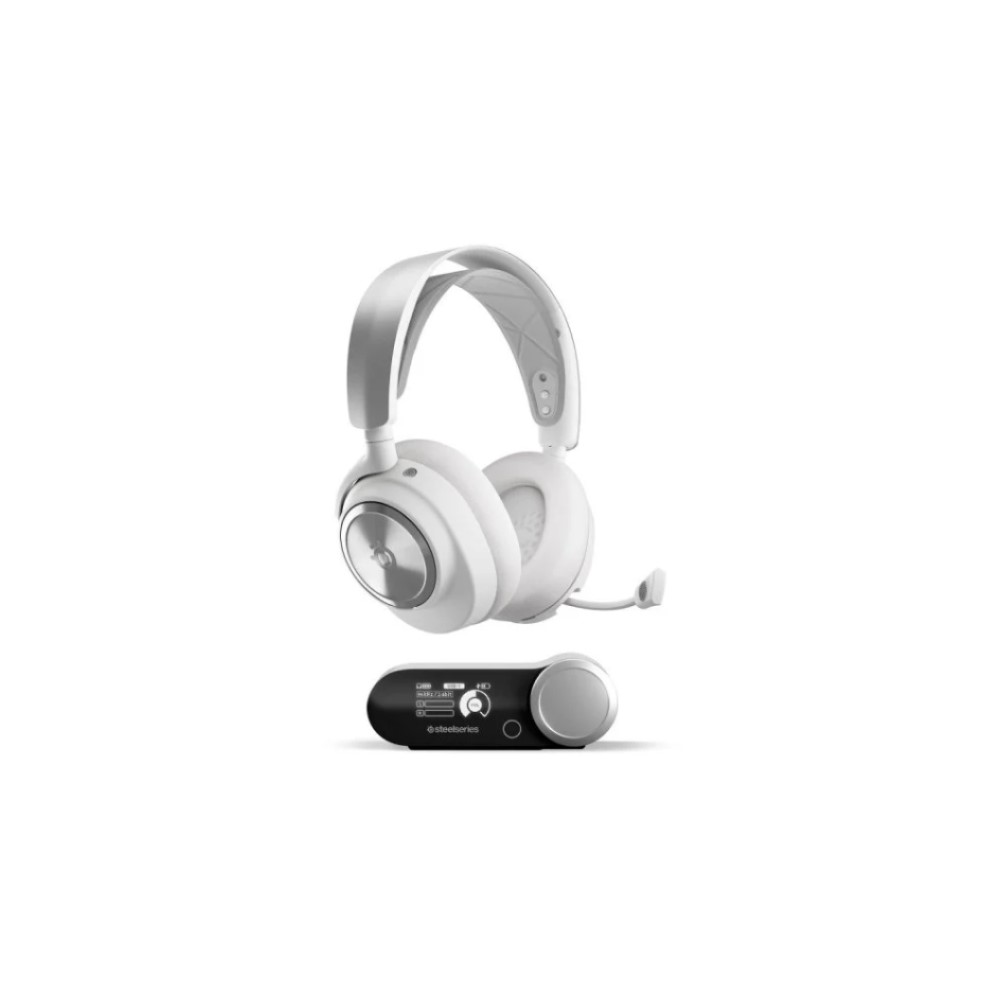

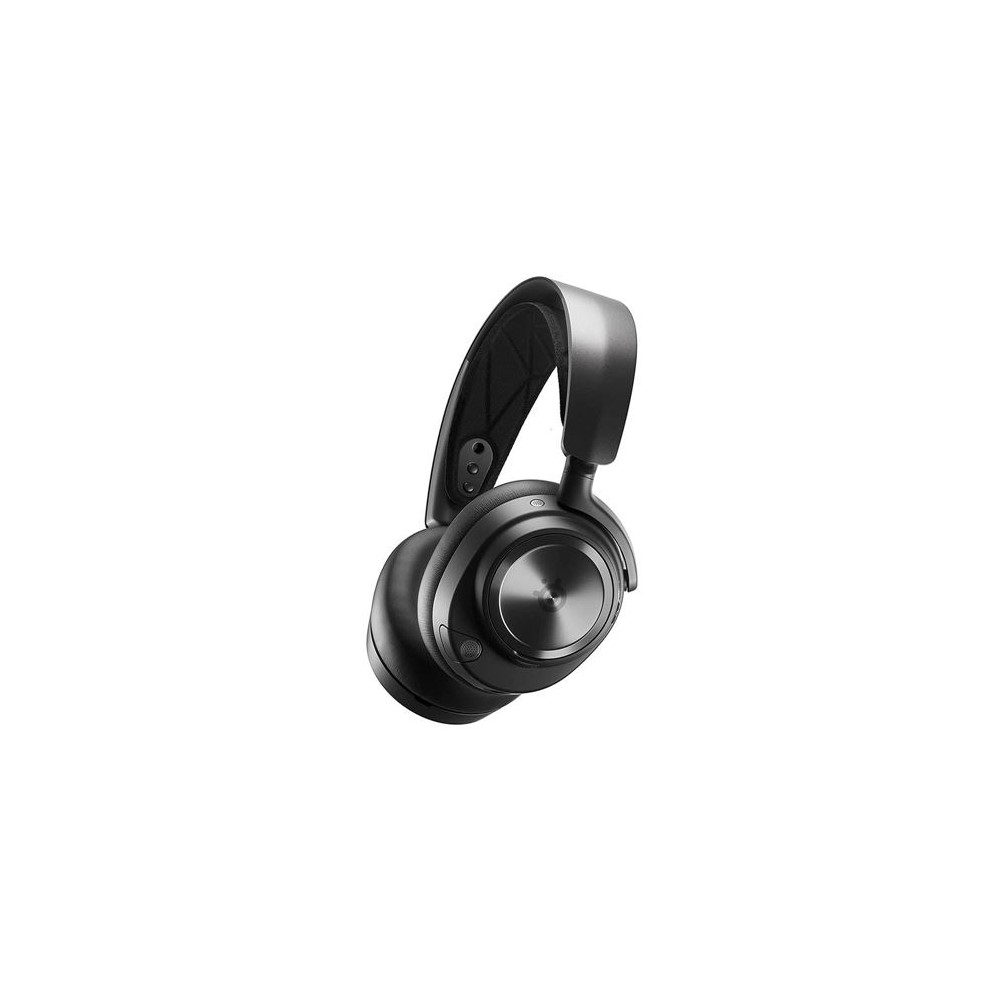

The SteelSeries Arctis Nova Elite represents a significant leap forward from the beloved Arctis Nova Pro Wireless, but at nearly double the price, is it worth the upgrade? The Elite packs enhanced active noise cancelation, improved sound quality with Hi-Res wireless transmission, and premium materials throughout. Meanwhile, the Nova Pro Wireless remains a feature-packed workhorse at a more accessible price point. Whether you’re considering an upgrade or choosing between these two premium gaming headsets for the first time, this comparison will help you decide which one deserves a spot on your gaming desk.
This article was originally published on October 17, 2025, and this is the first version.
What’s it like to use the SteelSeries Arctis Nova Elite compared to the Arctis Nova Pro?
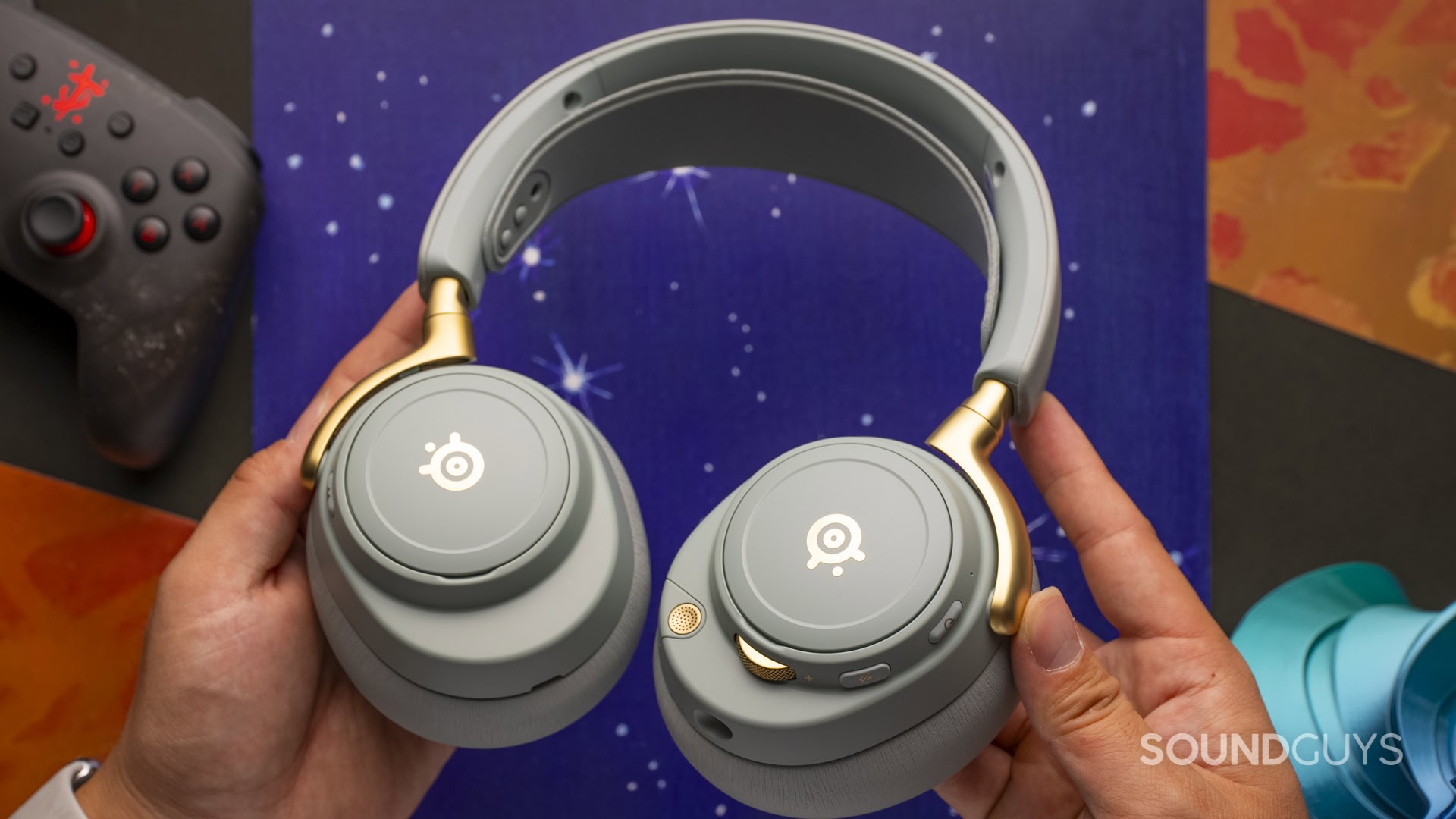
Both headsets share SteelSeries’ signature ski-goggle-inspired suspension headband design, but the Elite takes the build quality up a notch across the board. The materials upgrade is immediately apparent when you pick up the Elite. Where the Nova Pro Wireless employs a mix of metal and plastic with a somewhat plain finish, the Elite features a faux leather wrap over the outer metal headband, lending it a more refined and premium appearance.
The yoke construction represents one of the most significant improvements. The Elite features a metal finish wrapped in a plastic coating, creating a metallic fingerprint-magnet effect that feels cool to the touch and is undeniably luxurious. Both headsets feature internal metal collar reinforcement in the yoke mounting mechanism to prevent the ear cup snapping issues that plagued earlier Arctis models. Still, the Elite’s full metal yoke construction should prove even more durable over time.
The suspension strap fabric has also been upgraded on the Elite. The Nova Pro Wireless features a sport fabric with an athletic look. At the same time, the Elite utilizes a softer cloth material that provides excellent weight distribution and a more premium feel against your head. Neither headset feels scratchy or itchy during extended sessions.
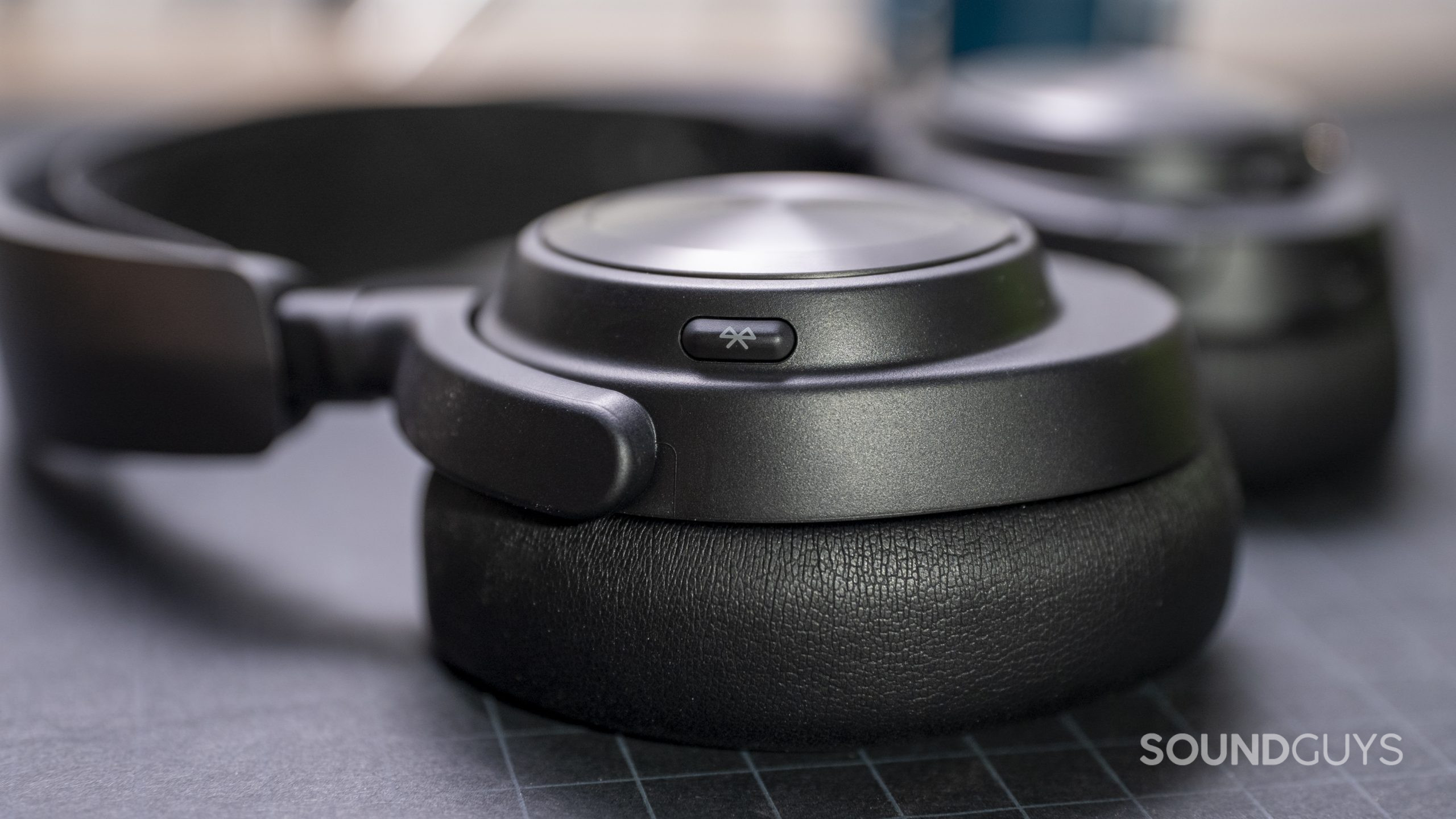
Comfort is excellent on both headsets, but the Elite edges ahead in a crucial way: pivot range. The Nova Pro Wireless has limited ear cup articulation, which can break the seal when you open your mouth wide (such as yawning or chewing), affecting the bass response. The Elite’s ear cups rotate much more freely, maintaining a better seal during use and reducing bass loss from fit issues. The Elite’s leatherette ear pads also feel noticeably thicker and more premium than those of the Nova Pro.
Another Elite improvement: the ANC microphone housing is now completely flush with the ear cup interior, eliminating the slight protrusion present in Nova Pro Wireless revisions. This makes the stock pads more comfortable for long sessions.
The controls differ slightly between models. Both feature controls on the left ear cup (power button, mic mute, and volume control), but the Elite uses a textured metal volume roller that feels more premium and clicky, while the Nova Pro Wireless uses a volume slider. The Elite’s gold-accented roller is a pleasure to use with excellent tactility.
Both headsets include a retractable boom microphone that sits completely flush when retracted, and both feature magnetic ear cup plates for easy battery access. The Elite includes a leather travel pouch with magnetic closure and zippered compartment, while the Nova Pro Wireless doesn’t come with a case.
The GameHub base stations are similar in functionality, both featuring OLED displays and multi-function control wheels. However, the Elite’s base station offers more ports and connectivity options, which we’ll cover in the connectivity section.
Do the SteelSeries Arctis Nova Elite or Arctis Nova Pro have more features?
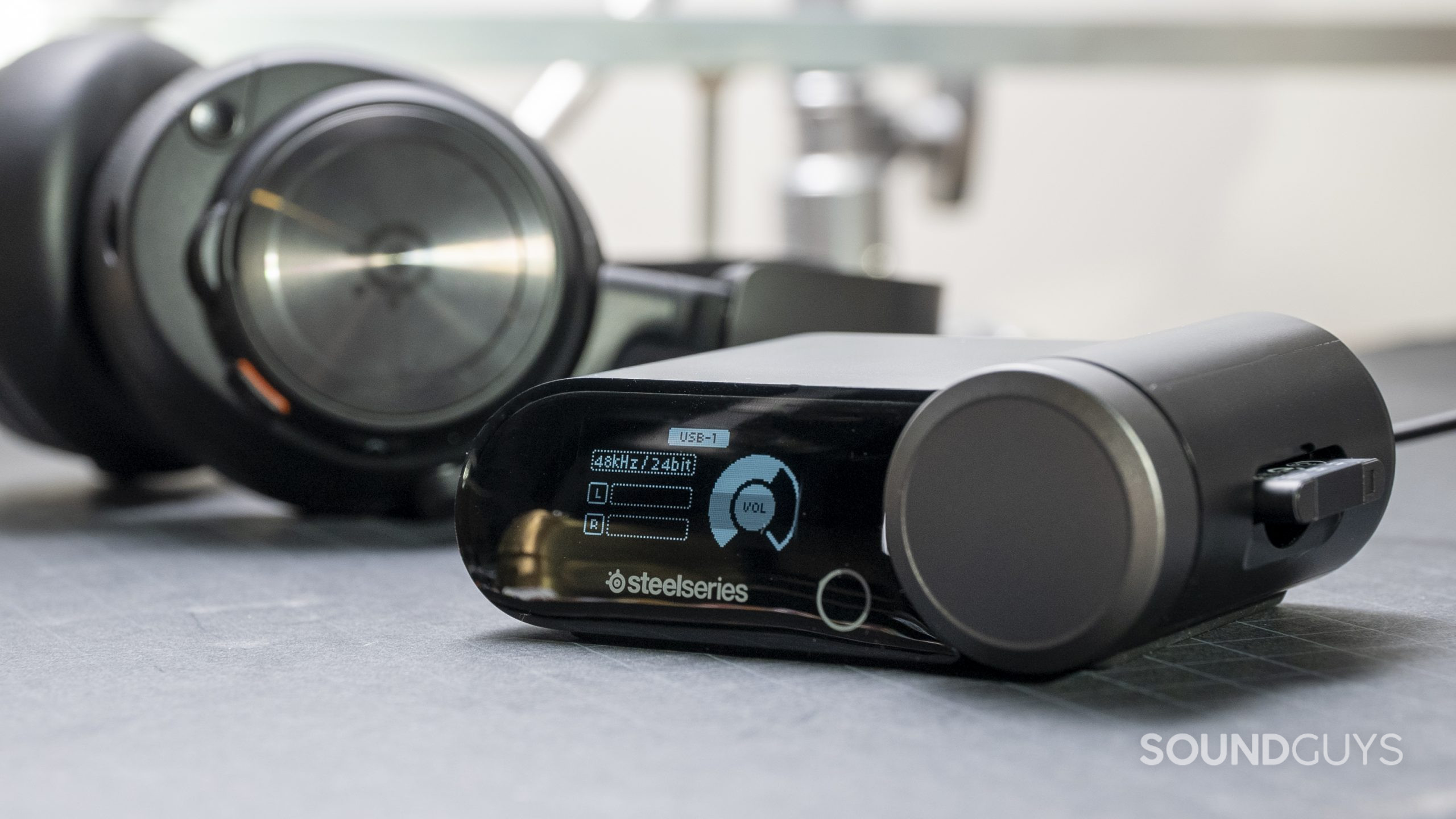
Both headsets are feature-packed, but the Elite pulls ahead with several additions that justify its premium positioning.
Software and EQ: Both headsets work with SteelSeries GG (including the Sonar Audio Suite) on PC and the mobile Arctis Companion app. You get access to hundreds of game-specific EQ presets on both, plus parametric EQ control with 11 bands to dial in frequency, gain, and Q factor exactly as you want. Both offer spatial audio, AI-powered noise suppression for the microphone, and detailed mixing controls.
The critical difference: the Elite resolves the EQ conflict issues that plagued the Nova Pro Wireless. With the older model, applying an EQ through Sonar would override the base station’s built-in EQ feature, forcing you to adjust everything through software. The Elite lets you use both software EQ settings and still make adjustments through the GameHub’s physical controls without conflicts.
Hidden ChatMix Feature: The Elite includes an undocumented feature the Nova Pro Wireless lacks: game-to-chat mixing without Sonar software. By connecting both USB 1 and USB 2 ports to your computer, the Elite appears as two separate audio devices. If you’re playing a game that supports separate audio channels for game and chat, you can assign each to different USB channels and use the GameHub’s dial to fade between them—creating effective ChatMix without software overhead.
Streaming Features: The Elite’s GameHub offers versatility that streamers will appreciate through its line output options. You can toggle between standard speaker output mode or dedicated stream output directly from the base station. When set to stream output, the line out combines your microphone, game audio, and chat into a single feed—a feature the Nova Pro Wireless doesn’t offer.
The Elite’s line input also provides sidetone monitoring for external microphones. If you’re using a professional XLR microphone like the Elgato Wave or GoXLR, connecting its output to the GameHub’s line input lets you hear your external mic in real-time through the wireless headset. This is remarkably convenient for streamers who want premium microphone quality without sacrificing wireless freedom.
What They Share: Both feature hot-swappable batteries with charging bays in the base station, simultaneous Bluetooth connectivity, retractable boom microphones with built-in headset mics as backup, microphone EQ presets, and sidetone adjustment. Both base stations feature OLED displays with on-device EQ and mixing controls.
How do the SteelSeries Arctis Nova Elite and Arctis Nova Pro connect?
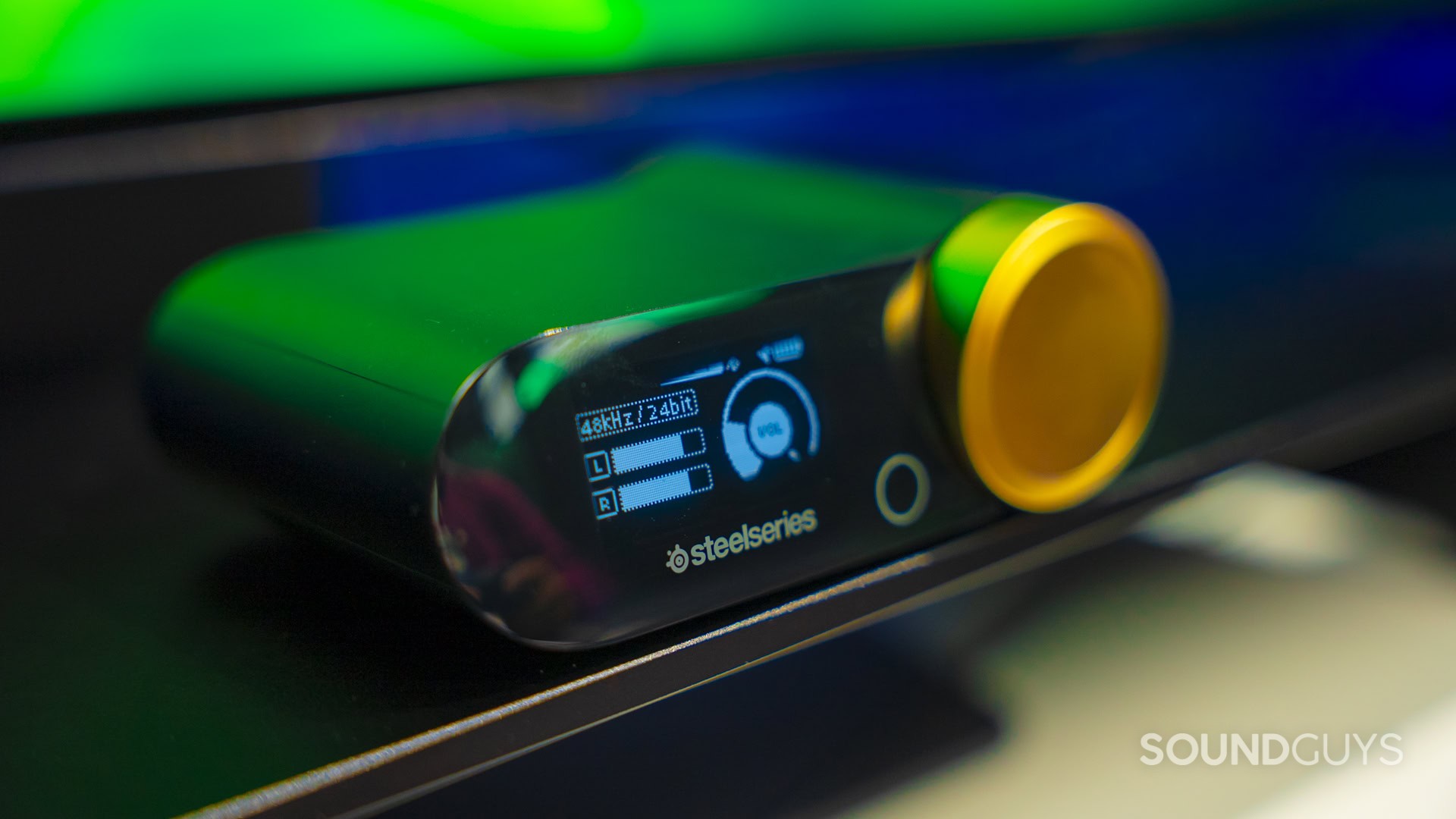
Wireless Performance: The Elite uses a higher-bandwidth LC3+ protocol with 24-bit/96kHz Hi-Res audio transmission over 2.4GHz wireless, while the Nova Pro Wireless uses standard wireless transmission. This gives the Elite noticeably cleaner, less compressed audio with better clarity and detail retrieval. However, there’s a trade-off: the Elite’s wireless range maxes out at 25-30 feet before experiencing signal breakup, compared to the Nova Pro Wireless’s approximately 50-foot range. For most desktop gaming setups, this won’t matter, but if you frequently wander far from your desk, the Nova Pro Wireless has the advantage.
In my experience, both headsets occasionally experience very brief drops in wireless quality, though these are rare and minimal.
Bluetooth: The Elite supports Bluetooth 5.3 with LE Audio, including SBC, LC3, and LC3+ codecs, plus multipoint connectivity for managing multiple devices. The Nova Pro Wireless supports Bluetooth 5.0 with SBC only, and no multipoint. Both allow simultaneous 2.4GHz wireless and Bluetooth connections.
Base Station Connectivity: Here’s where the Elite truly shines. The Elite’s GameHub features three USB-C ports (with Port 3 specifically designed for Xbox compatibility), plus dedicated 3.5mm line-in and line-out jacks. This allows up to four wired connections with audio mixing from up to four sources simultaneously—on top of Bluetooth and 2.4GHz wireless, making six total audio streams. You can have USB connections to PC, PlayStation, and Xbox, Bluetooth to your phone, and a 3.5mm line-in all feeding audio to the headset at once.
The Nova Pro Wireless base station offers two USB-C ports and two 3.5mm TRS jacks (one line in, one line out), which is still excellent but more limited than the Elite’s setup.
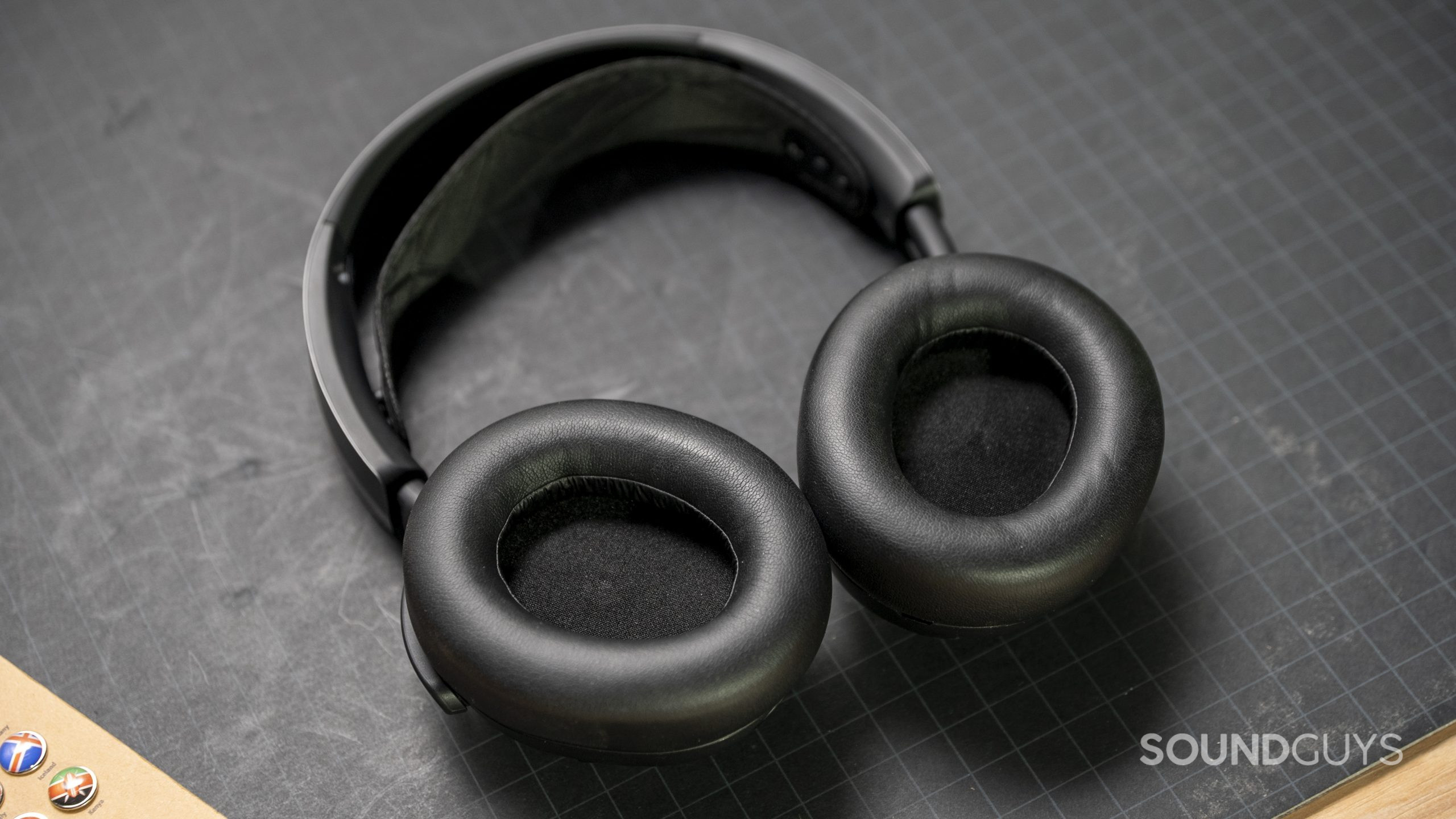
Platform Compatibility: This is crucial: the Nova Pro Wireless requires choosing between PlayStation and Xbox versions when purchasing—you can’t have both. The Elite works with everything out of the box, including PC, PlayStation 4/5, Xbox Series S/X, Mac, Nintendo Switch, iPhones, Android devices, Meta Quest headsets, tablets, and handheld gaming devices.
Wired Options: Both headsets feature 3.5mm audio jacks for wired listening when away from the base station. Neither supports direct USB audio—you can’t plug them into a PC via USB-C and get audio, only charging.
Is battery life better on the SteelSeries Arctis Nova Elite or Arctis Nova Pro?
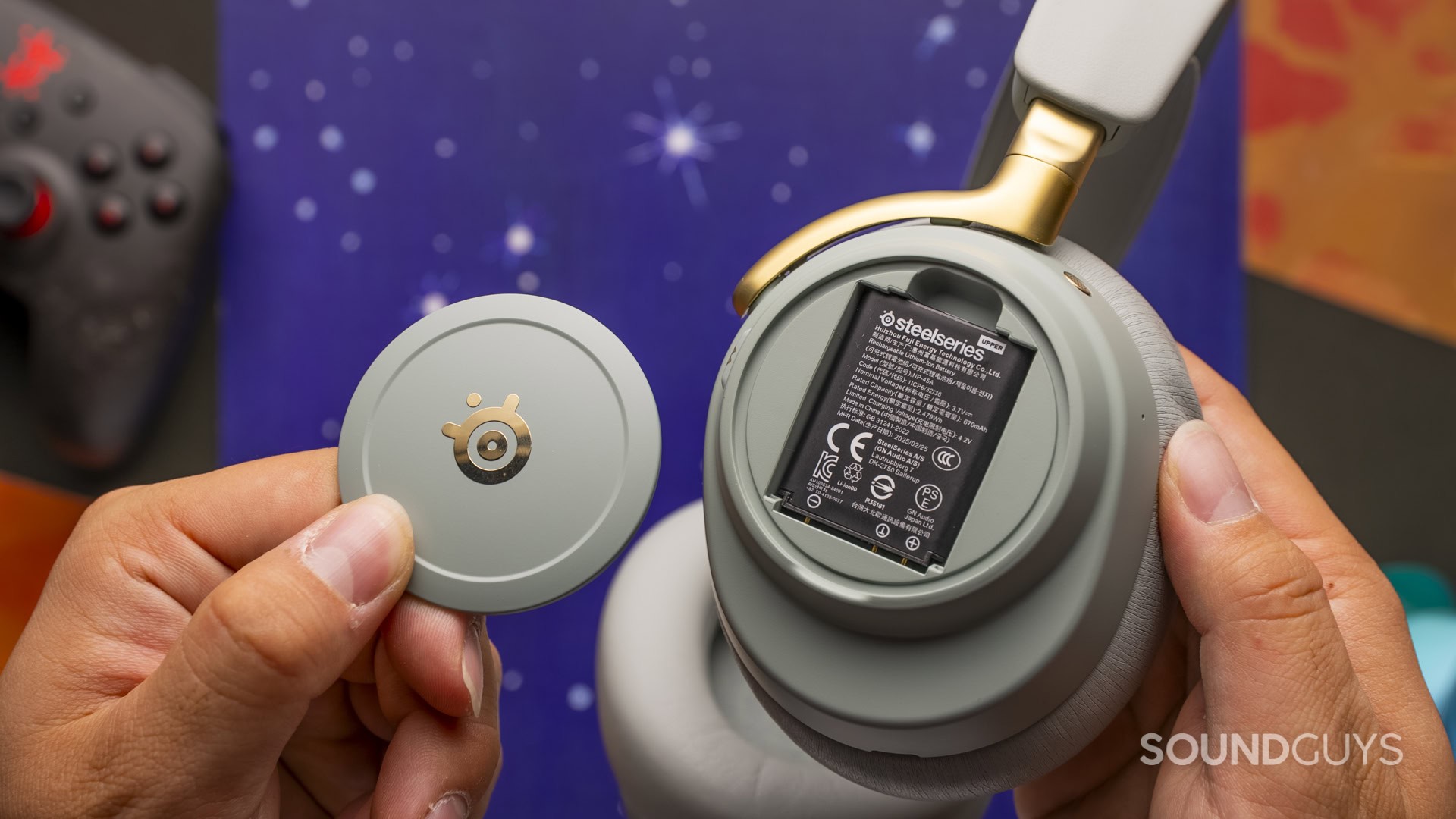
Both headsets utilize the same “Infinite Power System” with hot-swappable batteries; however, there are differences in capacity and performance.
Battery Specifications:
- Elite: Two 700mAh batteries, 30 hours per battery (60 hours total)
- Nova Pro Wireless: Two batteries, 18-22 hours advertised per battery (our testing achieved 22 hours, 36 minutes)
The Elite’s batteries last significantly longer per charge—approximately 30 hours versus 22 hours on the Nova Pro Wireless. This means less frequent battery swapping and more gaming time before needing to rotate batteries.
Both systems charge identically; one battery remains in the headset, while the other charges in the base station’s bay. When the active battery dies, you pop off the magnetic right ear cup cover and swap in a fresh battery. Both headsets stay powered for about eight seconds during the swap, preventing audio dropout. There is also a USB-C port, located under a magnetic cover on the left ear cup of both headphones, for charging when away from the base station.
Do the SteelSeries Arctis Nova Elite or Arctis Nova Pro block noise better?
The Elite delivers a substantial upgrade in noise isolation and active noise cancelation compared to the Nova Pro Wireless.
Loading chart ...
The Elite achieves an average noise reduction of 84% with ANC enabled, making it the best noise canceling gaming headset we’ve tested so far. The Nova Pro Wireless offers decent ANC with an average 74% noise attenuation that helps suppress room noise, but it’s not in the same league as the Elite’s performance.
The Elite’s ANC system excels at eliminating low-frequency noise by up to 30dB—think air conditioning hum, computer fans, traffic rumble, or refrigerator buzz. It’s also surprisingly effective at reducing mid-range and high-frequency sounds by up to 48dB, quieting conversations and keyboard clicks.
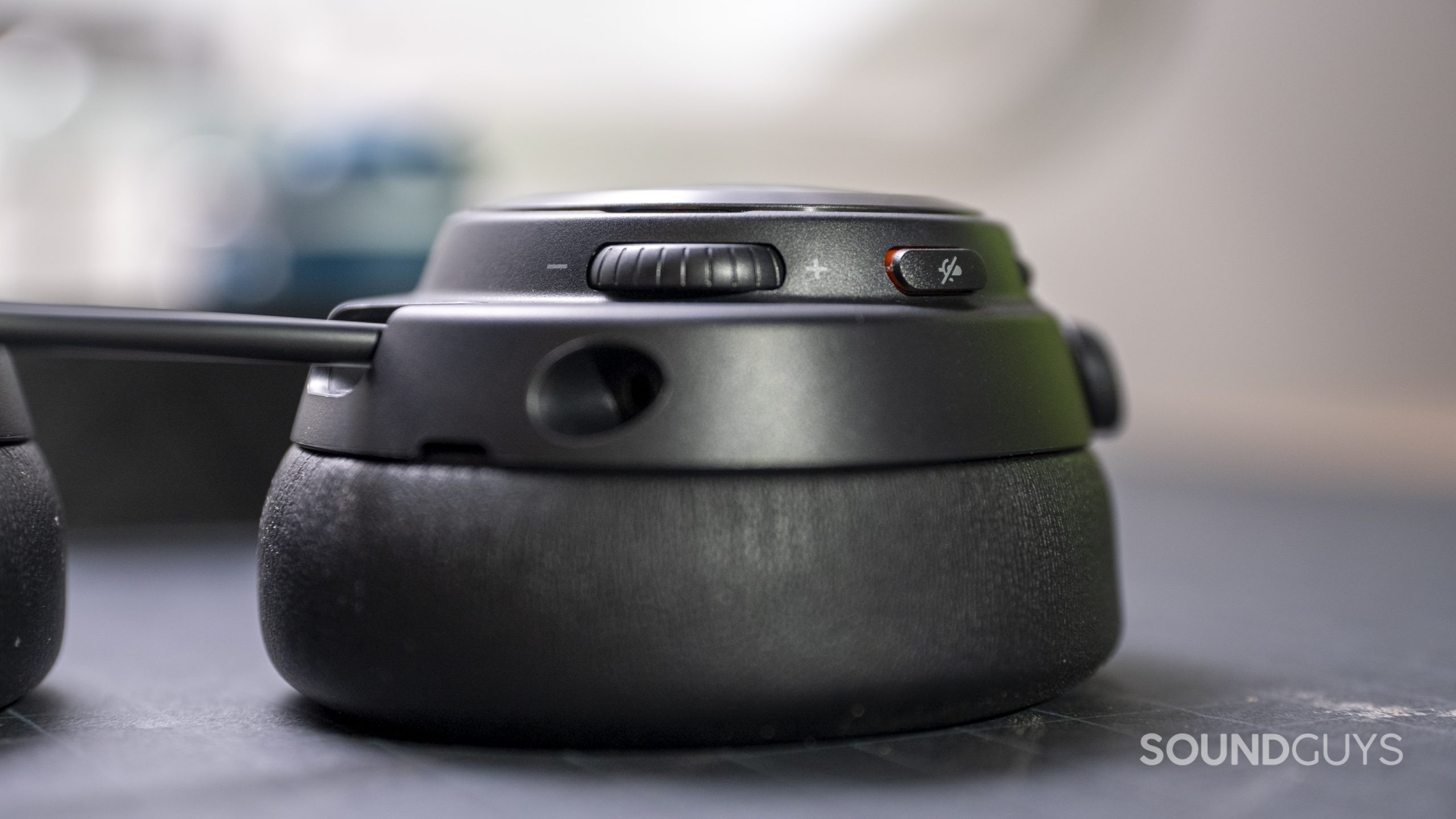
The Nova Pro Wireless handles low-frequency noise reasonably well, making AC units and traffic sound about half as loud, and reducing the sound of nearby conversations. However, it doesn’t match the Elite’s across-the-board effectiveness.
Both headsets offer good passive isolation thanks to their closed-back designs and large, well-sealed ear cups. The Elite’s improved ear cup pivot range helps maintain a better seal during use, which contributes to slightly better passive isolation.
The Elite’s ANC performance rivals that of dedicated consumer headphones from Sony and Bose, making it a genuinely viable option for travel and commuting. The Nova Pro Wireless works for travel but doesn’t provide the same level of noise reduction for flights or public transportation.
Do the SteelSeries Arctis Nova Elite sound better than the Arctis Nova Pro?
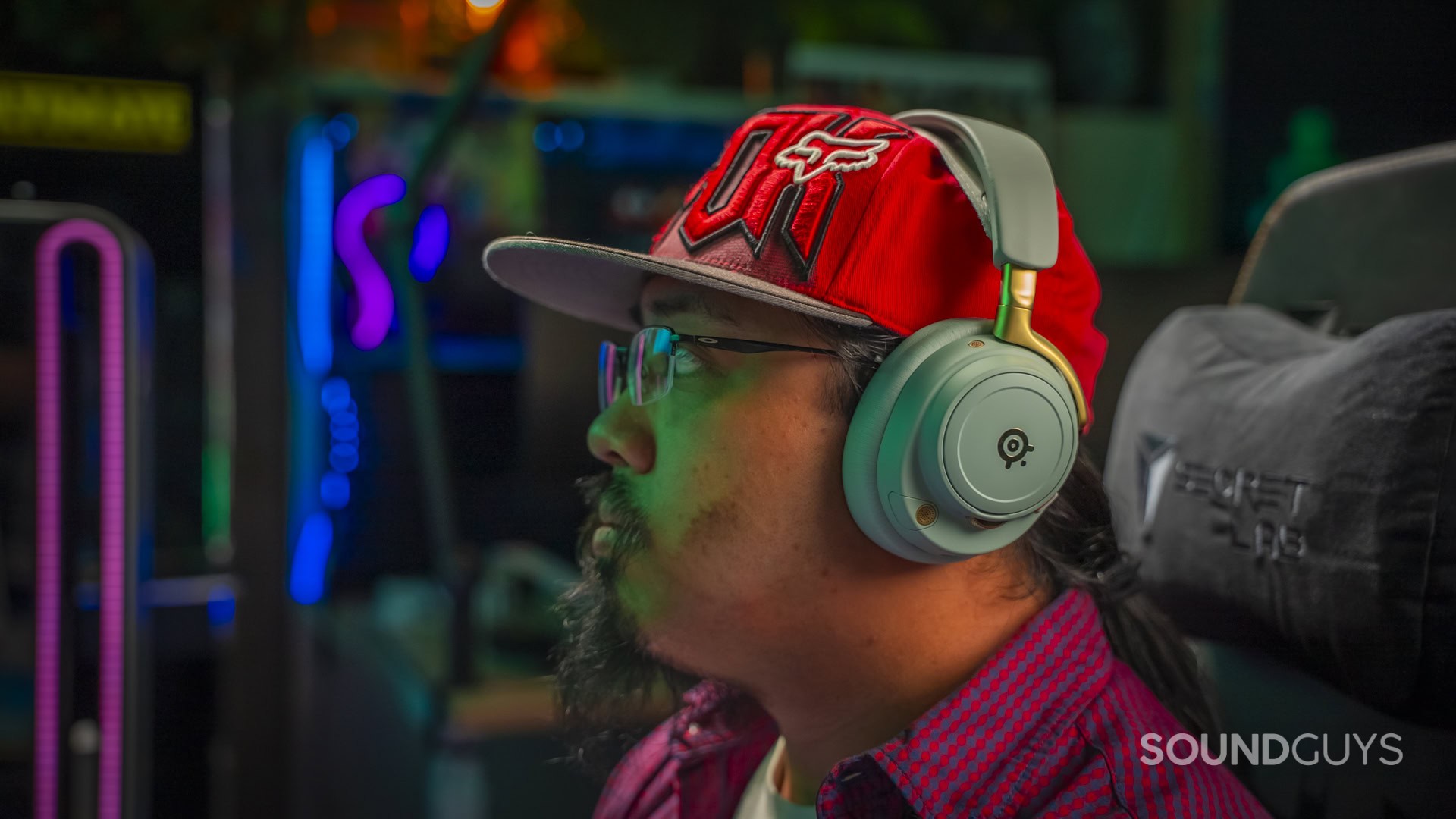
The Elite’s most immediately noticeable upgrade is bass precision. Impacts from bass instruments are more accurate with better-defined attack. I could clearly distinguish between a kick drum’s low 40Hz thump and a bass guitar’s higher 120Hz notes—two distinct bass frequencies that less expensive gaming headsets (and the Nova Pro Wireless to a lesser extent) blur together. This improved bass precision gives explosions and grenades in games like Call of Duty satisfying punch without becoming overwhelming.
The Elite also sounds cleaner and more detailed in the midrange and treble frequencies compared to the Nova Pro Wireless. The distortion and graininess present in the Nova Pro Wireless’s treble reproduction has been significantly reduced on the Elite, resulting in better clarity and less listening fatigue during extended sessions.
The extensive library of game-specific EQ presets works identically on both headsets, with hundreds of individually tuned profiles for specific titles that emphasize footstep clarity, dialogue presence, or environmental immersion as needed. Both offer full parametric EQ with 11 bands, but the Elite’s software integration makes customization more seamless. Custom EQ unlocks significant potential on both headsets, though the Elite’s lower baseline distortion means it responds better to EQ adjustments.
Objective Measurements
Loading chart ...
Both headsets maintain SteelSeries’ typical sound signature with similar frequency response measurements. They feature a pronounced 5kHz scoop followed by an 8kHz peak, creating a natural, non-shouty presentation that avoids nasality but comes at the cost of some perceived detail.
The Nova Pro Wireless shows a slight bass emphasis around 100Hz and a slight dip around 4kHz, with a narrow 8kHz peak and high-end roll-off beginning around 10kHz. The Elite measures similarly but with better bass linearity, especially with ANC enabled.
The Elite demonstrates noticeably improved channel matching over the Nova Pro Wireless, with less channel imbalance. This contributes to better imaging performance and more accurate spatial positioning in games.
Do the SteelSeries Arctis Nova Elite or Arctis Nova Pro have a better microphone?
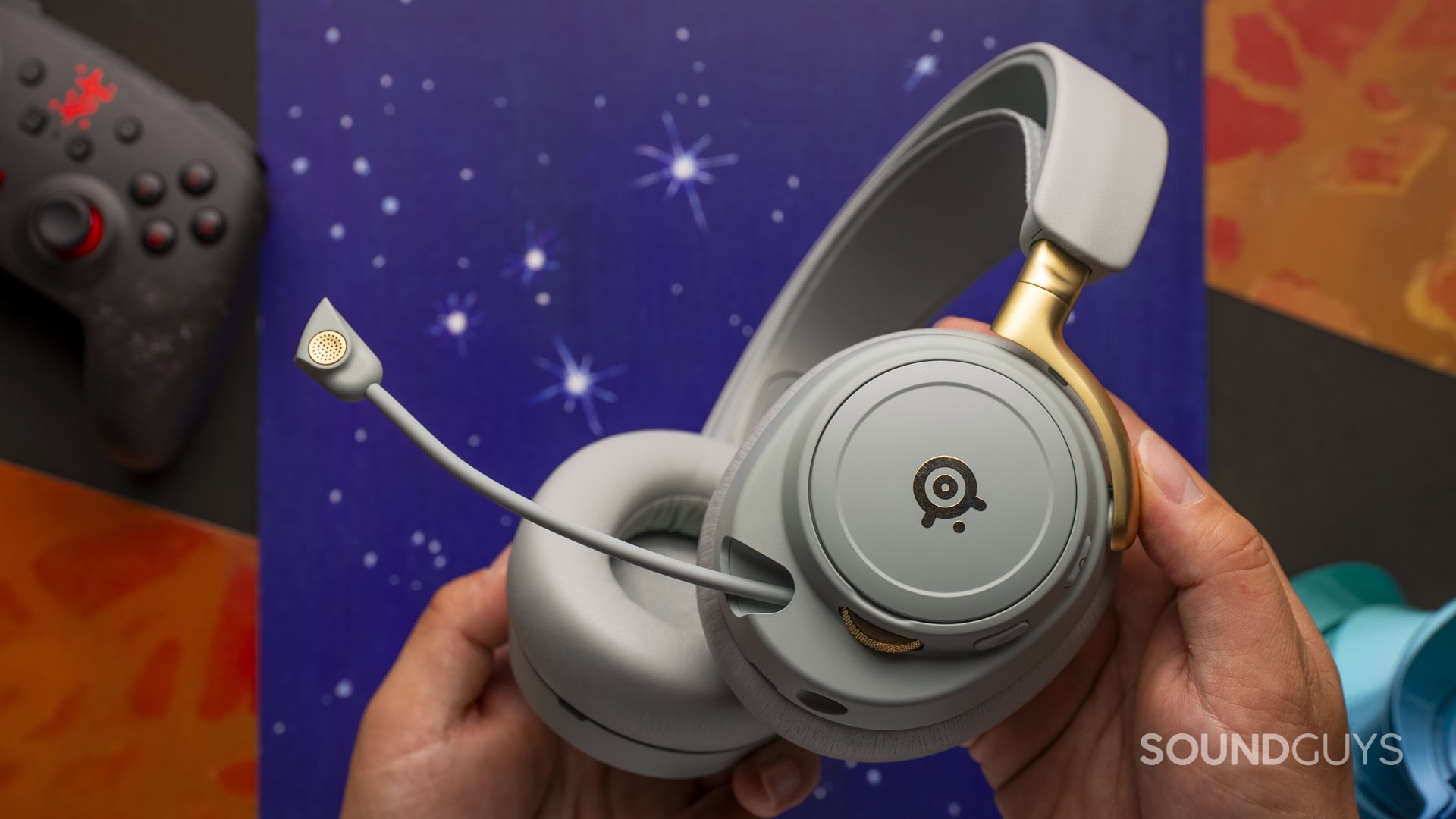
The Elite’s microphone delivers improved clarity and more natural reproduction compared to the Nova Pro Wireless. While the Nova Pro Wireless mic was adequate for chat and compares well with other wireless gaming headsets, the Elite’s improved performance makes it more suitable for streaming and content creation. Additionally, only the Elite includes backup microphones built into the headset that activate when the boom mic is retracted, though quality drops noticeably compared to the boom mic.
The Elite’s AI-powered noise rejection deserves specific mention. Even with rejection disabled, the microphone applies some baseline processing. As you can hear in the samples from loud environments with rejection set to maximum, the Elite’s mic almost eliminates the loud noise while preserving voice clarity. There’s noticeably more processing artifacts at maximum settings, but the trade-off is worthwhile in noisy environments. The Nova Pro Wireless doesn’t offer this level of adjustable noise rejection.
SteelSeries Arctis Nova Elite microphone demo (Ideal conditions):
SteelSeries Arctis Nova Pro microphone demo (Ideal conditions):
SteelSeries Arctis Nova Elite microphone demo (Noisy conditions):
SteelSeries Arctis Nova Pro microphone demo (Noisy conditions):
The Elite’s built-in sidetone is surprisingly robust—perhaps even overpowering by default. It’s bassier than expected and significantly louder than the Nova Pro Wireless, giving you better awareness of your own voice. Both headsets allow sidetone adjustment through software.
As for accessories, the Elite includes a foam windscreen that makes a substantial difference in reducing plosives, though it doesn’t fit tightly enough to survive being jostled in a bag during travel. The Nova Pro Wireless doesn’t include this accessory.
SteelSeries Arctis Nova Elite vs Arctis Nova Pro: Price and availability
The price difference between these headsets is substantial and represents the biggest deciding factor for most buyers.
Retail Pricing:
- Arctis Nova Elite (Released September 30, 2025): $599.99 at Amazon
- Arctis Nova Pro Wireless (Released May 24, 2022): $349.99 at Amazon
The Elite costs $250 more at retail—nearly double the original price of the Nova Pro Wireless. However, the Nova Pro Wireless frequently goes on sale and can often be found for around $300 or less, making the real-world price gap even wider.
Remember that the Nova Pro Wireless requires choosing between PlayStation and Xbox versions at purchase, while the Elite works with all platforms out of the box. If you game on multiple consoles, you’d need to buy a Nova Pro Wireless for each platform or accept limited compatibility, whereas the Elite handles everything.
Should you get the SteelSeries Arctis Nova Elite or Arctis Nova Pro?
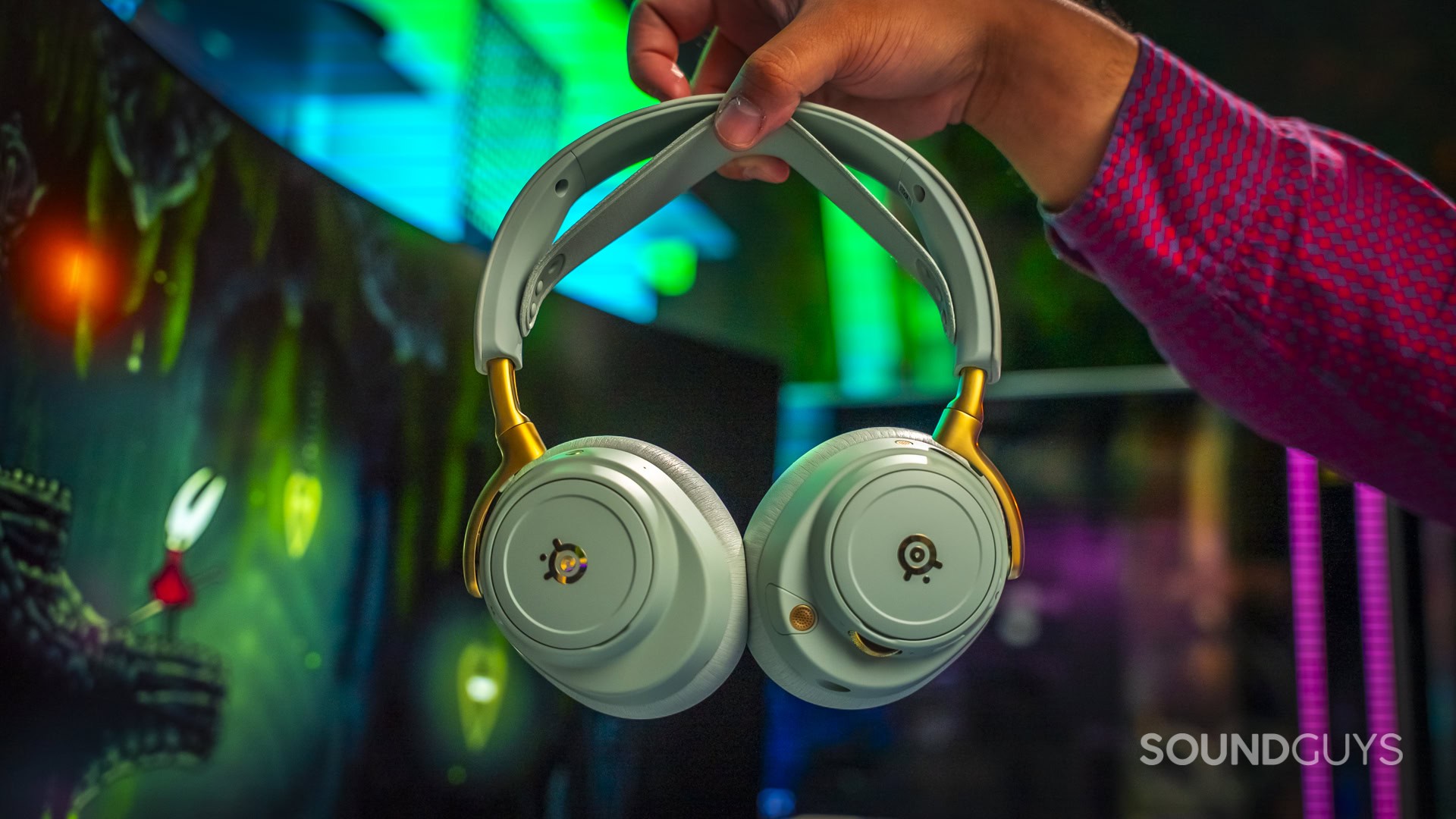
The decision comes down to three factors: whether you need exceptional ANC, how many platforms you game on, and if you’ll use it beyond your desk.
The Elite justifies its $600 price if you need a headset that doubles as everyday headphones for travel and commuting. Its ANC is comparable to top consumer headphones from the likes of Bose and Sony, while blocking significantly more noise than the Nova Pro Wireless. The sleek design supports this dual role, and streamers benefit from dedicated stream output and external mic monitoring features.
Universal platform compatibility matters if you game across PC, PlayStation, and Xbox—the Elite works with everything out of the box, while the Nova Pro Wireless forces you to choose between console versions. The Elite also handles up to six simultaneous audio streams, though this is overkill for most users.
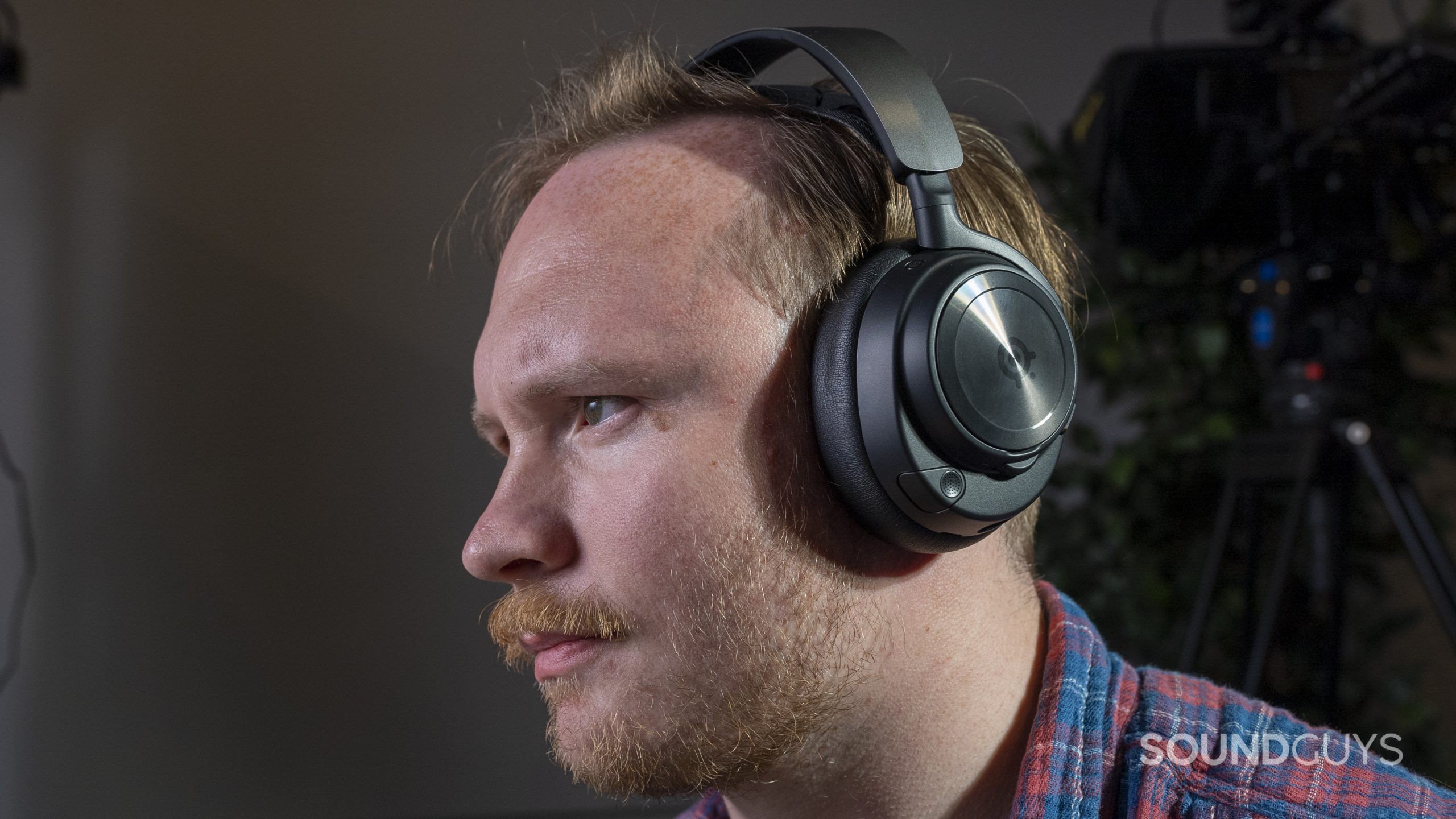
If you’re primarily gaming at a desk on one or two platforms, the Nova Pro Wireless delivers 85-90% of the Elite’s performance for half the price. You get the same hot-swappable batteries, excellent comfort, good sound quality, and game-specific EQ presets. The ANC is passable, wireless range is actually better (50 feet versus 25-30 feet), and at $300-350, it’s the smarter value for most gamers.
The sound quality gap is real but incremental—noticeable in direct comparison but not revolutionary. If you own a Nova Pro Wireless, there’s no compelling reason to upgrade unless you specifically need better ANC or streaming features. For a first-time purchase with budget flexibility, the Elite is the better long-term investment. For everyone else, save the $250 and get the Nova Pro Wireless.

Premium materials
Hot-swappable battery
Sound quality
ANC

Which headset would you choose?
Thank you for being part of our community. Read our Comment Policy before posting.